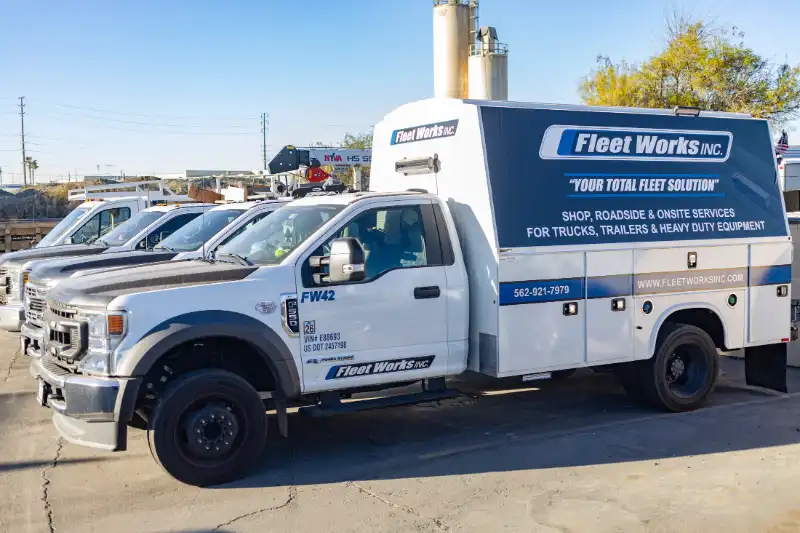Brake System Safety for Heavy Construction Equipment: What You Need to Know
Some machines like telehandlers, dump trucks, and Tier IV dozers use hydraulic assist for smoother control. A master cylinder amplifies foot pressure, and compressed air provides final power. Knowing your components helps diagnose issues quickly instead of random part replacements.

Anatomy of a Heavy-Duty Brake System
Most construction rigs rely on a compressed air brake system designed for heavy loads. When you press the pedal, stored air moves rapidly through steel lines, pushing the diaphragm inside a service chamber. That force drives the rod and turns the slack adjuster arm, which swings an S-cam to press the shoes against the drum. Releasing the pedal allows vented air and return springs to pull the shoes away, preparing for the next stop.
Several machines—telehandlers, articulated dump trucks, and some Tier IV dozers—combine hydraulic assist for smoother control. In these setups, a master cylinder amplifies foot pressure with fluid force before compressed air provides the final power. Knowing which components are in your equipment helps you diagnose problems quickly rather than randomly replacing parts.
Top Brake Hazards on California Jobsites
Your geography influences your wear pattern:
- Brake drum wear signs in Oakland’s salty air—deep grooves or “crazy-blue” heat spots—indicate corrosion and fading.
- Riverside’s desert swing (105 °F at noon, dropping to 50 °F at night) causes water to condense inside tanks, speeding up the rusting of pushrods.
- Los Angeles stop-and-go traffic superheats linings, leaving that telltale acrid smell and longer pedal travel.
- Quarry dust east of Riverside infiltrates the breathers, gradually wearing down the seals to nothing.
Recognizing local stressors ensures your heavy equipment's brakes remain ready for use, rather than being sidelined in a mechanic’s bay.
Smart Inspection Routines
Daily walk-around (5 minutes)
- Listen for hissy leaks at valves and glad hands.
- Drain air tanks to spit out moisture.
- Check chamber pushrod travel—over ½ inch indicates the auto-adjuster has failed.
- Sight linings: Anything thinner than a pencil must be removed from the job.
Weekly and monthly diagnostics
- Pump system to cut out (typically 120 psi), hold the service brake, and time the drop from 90 psi to 80 psi. More than two minutes? You’re losing air.
- Pull wheels every 500 hours, mic the drums, and compare them to the OEM discard specification.
- Scan ECM fault codes; most Tier IV machines log low air warnings hours before the operator feels a soft pedal.
Document everything. Regulators appreciate clean logs, and disciplined paperwork helps prevent finger-pointing after an incident.
Compliance and Liability
Federal §1926.601 demands brakes “capable of stopping and holding equipment fully loaded,” but California often enforces tighter timelines. Under OSHA brake safety standards, expect a serious violation to start at $ 18,000, with multipliers for repeat offences. One Riverside contractor racked up $ 126,000 after a water truck rolled because the park brake wouldn’t hold. Staying compliant isn’t red tape; it’s profit protection.
Training Your Crew the Fleetworks Way
You can buy the best shoes and chambers, but they’re worthless if operators treat brakes like bumper-car pedals. Front-load every safety meeting with feel cues:
- More extended pedal travel can lead to shoe wear or incorrect slack adjuster adjustment.
- Metallic squeal on grade = linings to metal.
- Lag in air build after start-up = moisture-logged dryer cartridge.
Encourage immediate lockout/tag-out. Reward the operator who radios a warning whistle—not the one who muscles through “just one more load.”
Maintenance Intervals That Work
- 250 hours: Swap dryer cartridges; water is enemy #1 in any compressed air brake system.
- 500 hours: Pull wheels, mic drums/rotors, and verify shoe-to-drum contact.
- 1,000 hours: Rebuild chambers, S-cam bushings, and anchor pins.
- 2,000 hours: Benchmark the system according to new-machine specifications; replace any component at 80% wear.
Adjust those numbers based on job severity. LA traffic and steep hillside cuts wear out linings faster than work on flat farmland.
Predictive Maintenance & Future Tech
Sensors are shrinking, while data pipelines are becoming cheaper. Telematics modules now stream brake-pressure curves, lining thickness, and wheel-speed harmonics directly to your phone. AI algorithms flag deviations hours—or days—before the human ear detects a squeak. On hybrid or fully electric rigs, regenerative braking adds another layer; friction brakes become secondary, so corrosion can go unnoticed until you need them in an emergency. Pairing live data with disciplined construction equipment brake maintenance ensures you invest where it counts, not where it hurts.
Emergency Procedures When Brakes Fail
Even with bulletproof maintenance, parts break. Train crews to:
- Stay calm—panic skews reaction time.
- Downshift early; engine braking scrubs speed.
- Pop the hydraulic retarder or exhaust brake.
- Steer into an uphill berm or safe run-off.
- After a complete stop, block wheels, tag out, and call qualified techs.
Investigate root causes right away—overheated drums, collapsed return springs, or oil-soaked linings all stem from inspection gaps you can fix next time.
Conclusion & Next Steps
You push forward because deadlines don’t wait. Yet every schedule depends on reliable stoppers that work the first time, every time. Develop disciplined inspection routines, train your team’s senses, and invest in predictive technology. Your operators, neighbours on California roads, and bottom line will all appreciate it.
Shop Locations
Fleetworks Inc. is proud to have expanded to three locations across California, providing a wide-range of truck & equipment repair & fleet services from our locations in Oakland, Santa Fe Springs, Riverside, & the surrounding areas.
Santa Fe Springs Location
14011 Marquardt Ave, Santa Fe Springs, CA 90670
Riverside Location
*Equipment Service & Repairs only*
1310 Dodson Way, Riverside CA, 92507
